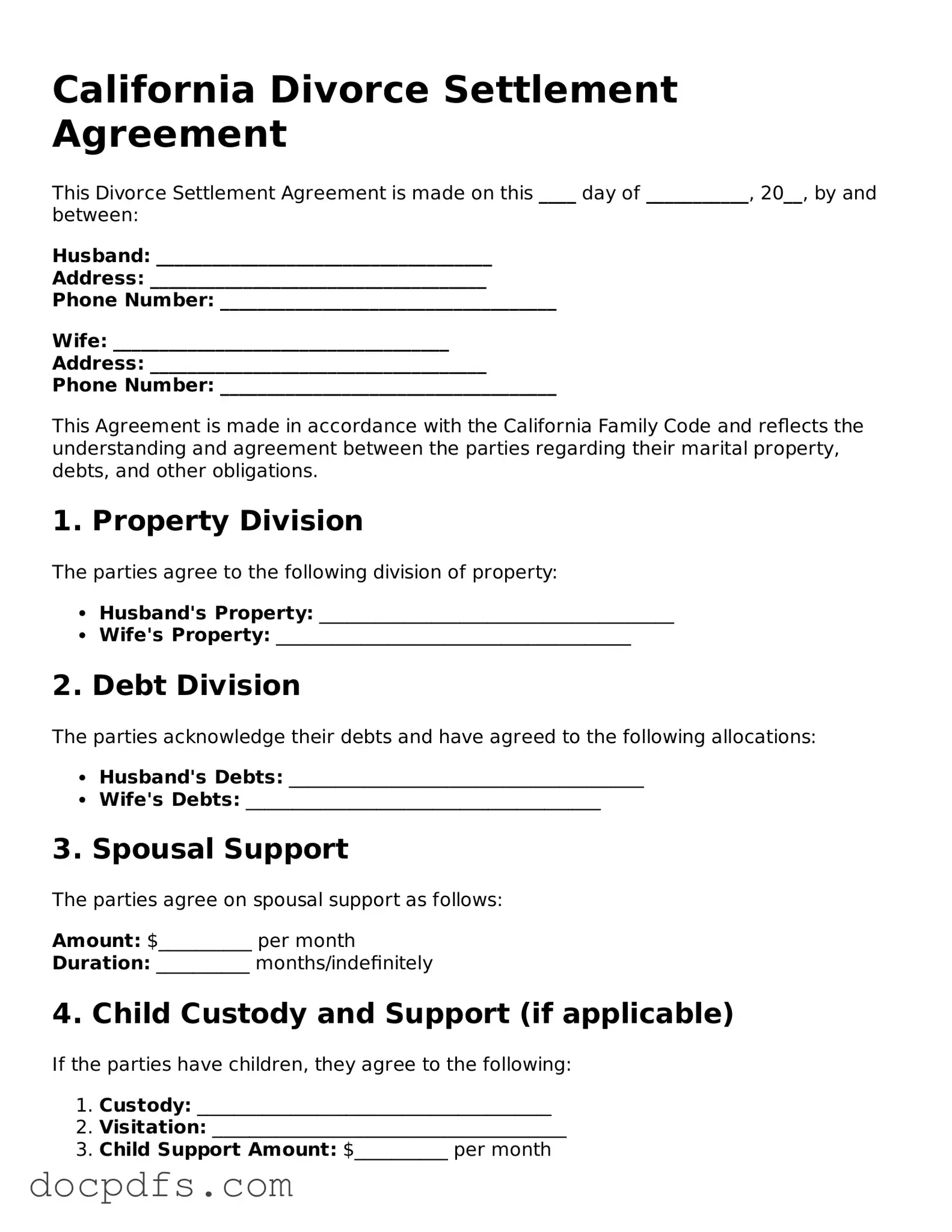Free California Divorce Settlement Agreement Form
The California Divorce Settlement Agreement form is a legal document that outlines the terms and conditions agreed upon by both parties during a divorce. This form covers crucial aspects such as asset division, child custody, and support obligations. Completing this form accurately is essential for ensuring a smooth and fair divorce process.
Open Divorce Settlement Agreement Editor Now
